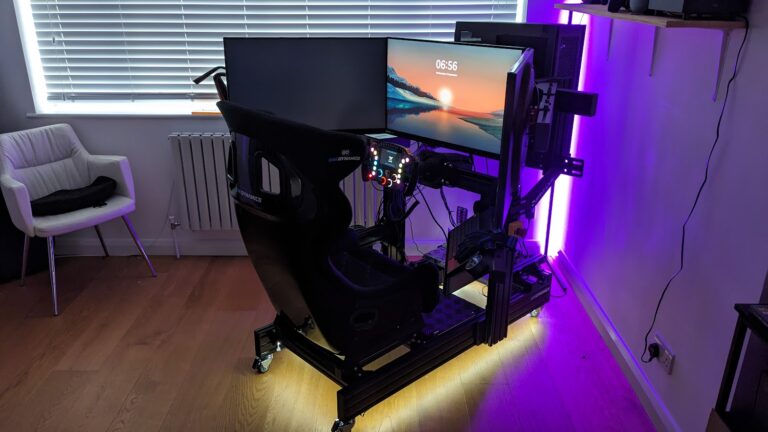Building your own racing setup can seem daunting, but it’s also exciting. A solid setup is essential for anyone serious about getting into racing games. A high-quality setup doesn’t just make racing more enjoyable. It can also help you improve your performance.
And if you want to get better at sim racing, learning proper driving techniques will give you an edge and make your experience much more enjoyable. In this guide, we will break everything down into simple, manageable steps. By the end, you’ll have a clear path to follow and a solid foundation for your racing experience.
The Essentials of a Racing Setup
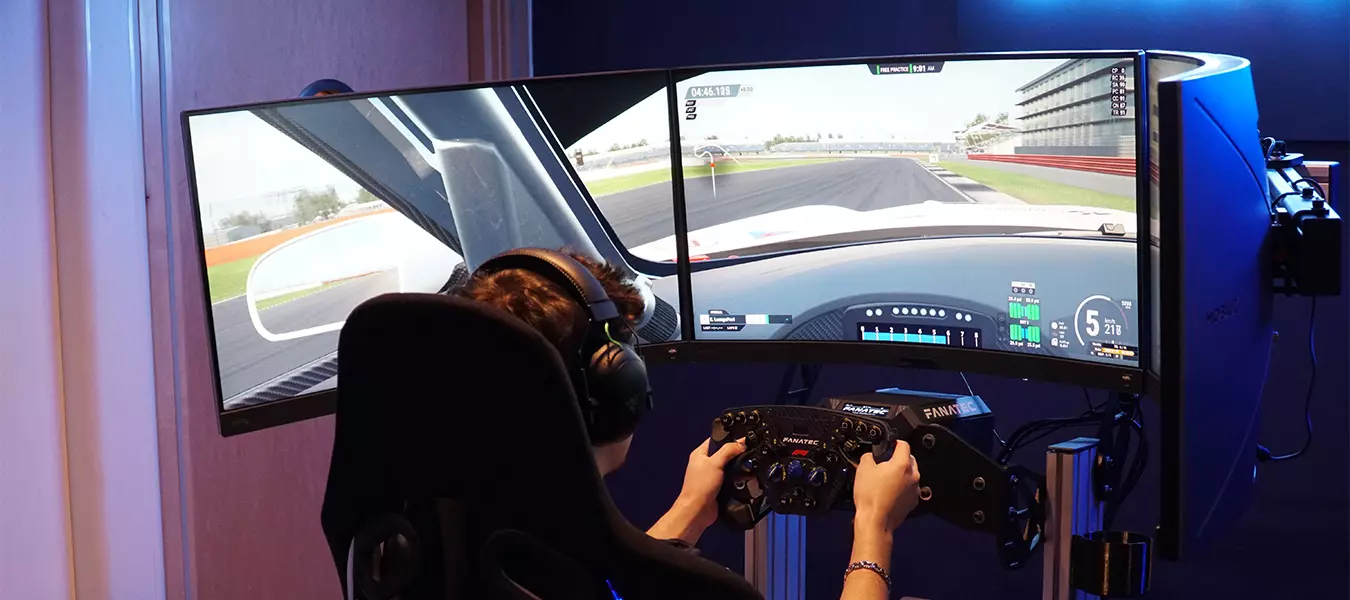
Before diving into specific gear, it’s essential to understand what makes a good setup. A solid setup requires three key components: a steering wheel, pedals, and a stable mount. These are the basics that will allow you to control your virtual car with precision.
The steering wheel and pedals act as your primary controls. A stable mount is important to keep the setup secure and avoid unwanted movement during races. Building your setup doesn’t need to be expensive or complicated. Many affordable options exist that deliver excellent performance.
Steering Wheel: The Heart of Your Setup
A high-quality wheel will give you the feedback needed to feel connected to the car. Wheels with force feedback systems simulate real driving conditions by providing resistance and vibrations, replicating the road’s surface and vehicle handling.
If you’re serious about getting better at racing, you can start with an entry-level wheel. A great example is the Logitech G29 or G920. Both offer strong force feedback and durability at a reasonable price point. You can eventually upgrade to something more advanced as you improve.
High-end models like the Thrustmaster T300 or the Fanatec CSL Elite offer even more realistic feedback. These models provide stronger, smoother force feedback. However, they can be pricey, so it’s wise to start with a basic model and see how far it takes you.
Pedals: Fine-Tuning Control
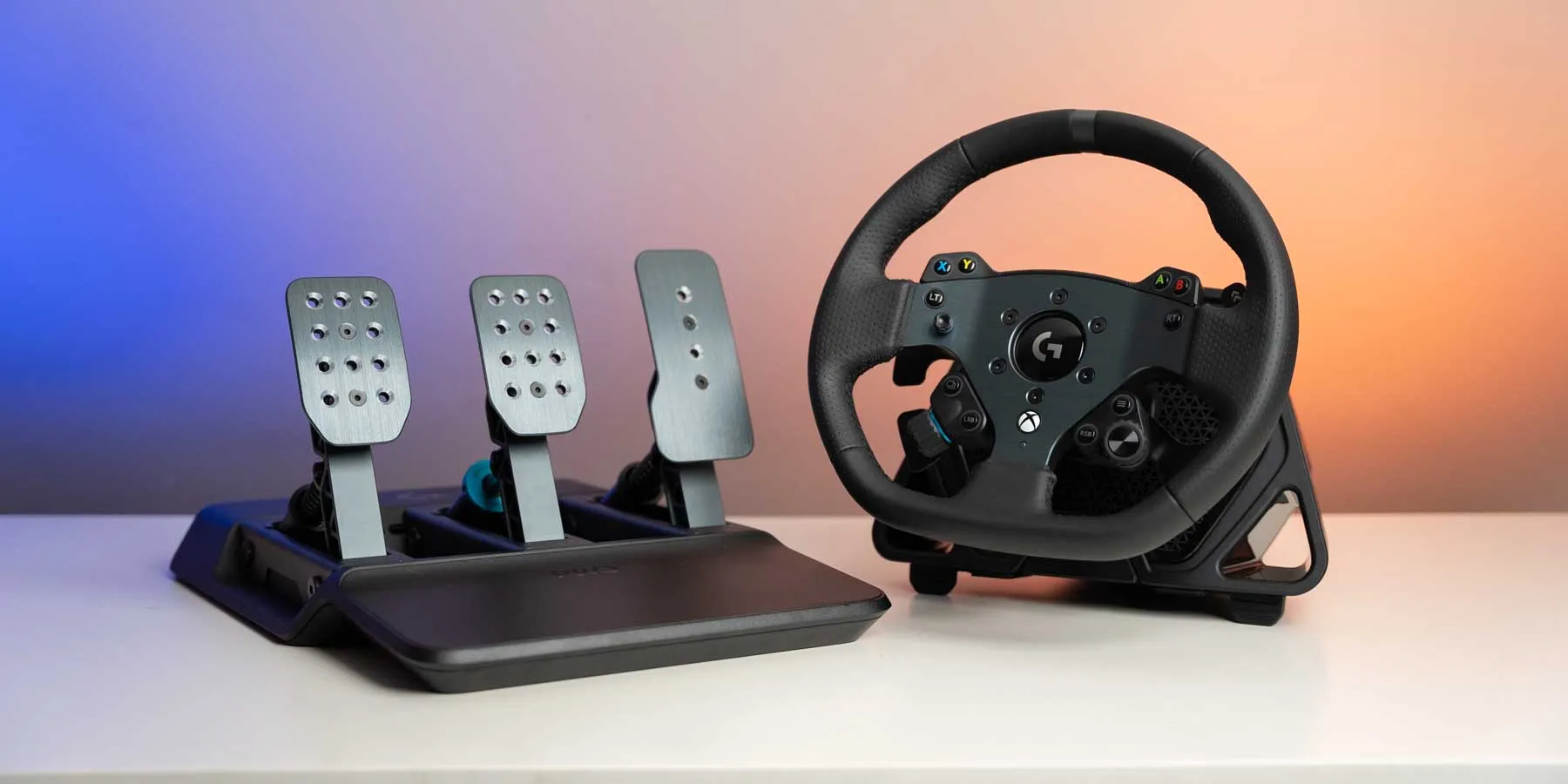
Most entry-level setups come with a set of two pedals (accelerator and brake). However, a three-pedal set (with a clutch) opens up more realistic control options. It allows you to use manual shifting, making driving more immersive.
When choosing pedals, look for ones that offer solid build quality and adjustability. The brake pedal should have a progressive feel, where it becomes stiffer as you press it harder, mimicking the feel of a real brake pedal. The Logitech G29/G920 pedal sets offer good performance at an affordable price.
Higher-end pedal sets, like the Thrustmaster T-LCM or Fanatec CSL Elite, offer even more precision. These models feature load-cell technology, which adds even more realism to the braking feel.
Mounting Your Setup
One of the biggest mistakes beginners make is setting their gear on unstable surfaces, like desks or tables. This results in unwanted movement during gameplay, affecting your driving. To ensure a solid foundation, invest in a dedicated wheel stand or racing seat.
A wheel stand is an adjustable frame that securely holds your wheel and pedals. This makes it easy to adjust your setup for comfort. Many budget-friendly options are available, such as the Next Level Racing Wheel Stand.
Display: Getting the Right View
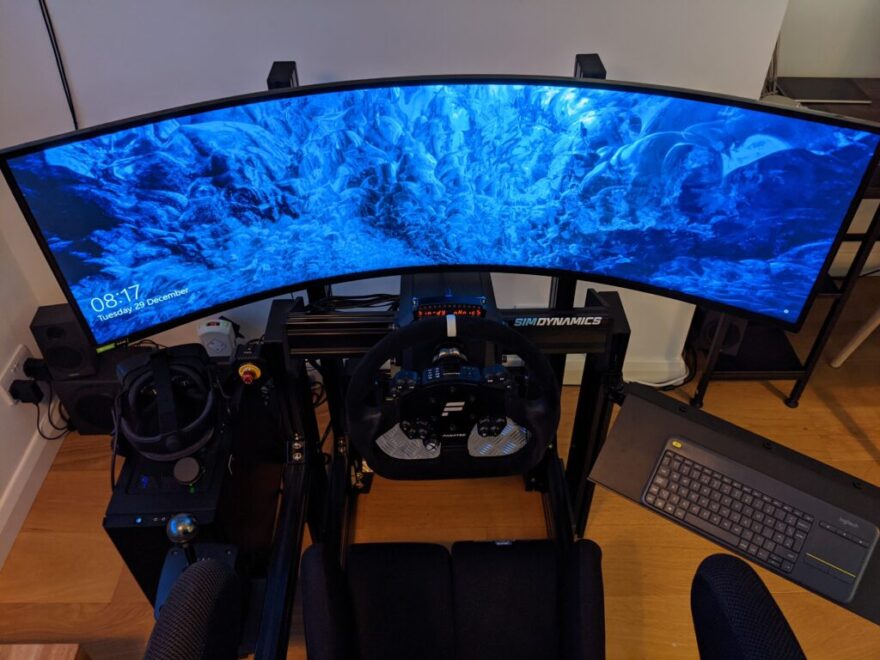
The goal is to get a clear, detailed view of the track and your surroundings. Most beginners start with a single monitor, and that’s perfectly fine. But a larger display will give you better immersion.
If you have a higher budget, you can also consider using a triple-monitor setup or even a VR headset. Triple monitors give a much wider field of view, which can make a huge difference in your awareness of what’s happening around you during a race.
Choosing the Right Software
Many racing titles are available, but the best software focuses on realism. They simulate how real cars behave on real tracks.
Some of the most popular titles include iRacing, Assetto Corsa, and rFactor 2. Each has its unique features and advantages. iRacing is great for serious competitive racers, with organized online leagues and a strong community. Assetto Corsa is known for its wide selection of cars and tracks, while rFactor 2 offers realistic vehicle dynamics.
Before investing in a game, research which one fits your goals and interests. Some games also offer free demos or trial periods, so you can test them out before committing.
Improving Your Racing Skills
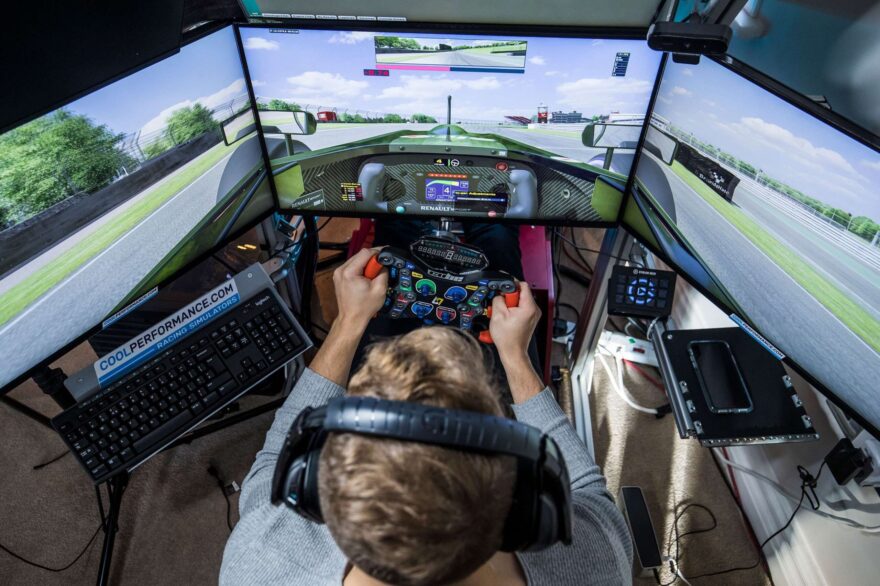
Once your setup is complete, the next step is to improve your driving skills. To truly get better at racing, consider investing in a course designed to help you master techniques. By learning from experts, you can avoid common mistakes and develop good habits early.
Budgeting for Your Setup
A beginner can expect to spend around $300-$500 for a decent wheel, pedals, and mount. This range includes popular entry-level options like the Logitech G29 or Thrustmaster T150.
As your passion grows, you can gradually upgrade components. Keep in mind that you don’t need to purchase everything at once. Start with the essentials (wheel, pedals, and mount), and build your setup over time.
High-end setups can range anywhere from $1000 to $3000. This includes top-of-the-line wheels, pedals with load cells, and dedicated racing cockpits. But many racers find that entry-level setups provide more than enough performance for casual racing.
Building a Comfortable Space
Your comfort during races is essential. A well-organized space can make a huge difference. Ensure that your setup is placed in an area where you can sit comfortably for extended periods without distractions.
If possible, set up your racing gear in a dedicated room or corner. This will help you stay focused. Use a chair that offers good support and adjust your screen to eye level. Comfort plays a huge role in maintaining focus during long races.
Lighting is also important. Avoid glare on your screen and try to use soft lighting that doesn’t strain your eyes. Little details like these can enhance your overall experience.
Headphones or Speakers?

A good set of speakers or headphones can make your time behind the wheel much more immersive. Many drivers prefer headphones because they block out distractions and provide clear, detailed sound.
Look for headphones that provide clear audio and comfortable padding. Popular options include the HyperX Cloud II or Audio-Technica ATH-M50x. These models offer great sound quality at a reasonable price.
Conclusion
Building your first racing setup doesn’t have to be overwhelming. Start with the basics: a solid steering wheel, reliable pedals, and a sturdy mount. As you progress, you can upgrade your equipment and create a more immersive experience. Exploring the role of AI in video games can also enhance your virtual racing by providing more dynamic and realistic opponents, making each race feel unique.
Take your time, do your research, and enjoy the process. The right setup is key to getting the most out of your virtual racing experience.
Related Posts:
- 20 Best Gaming Headset Under 50$ 2024 - for PC, PS4,…
- Top 10 Best Modem For Gaming 2024 - For Optimum Gaming Speed
- How Long Should a Jump Rope Be | How to Measure +…
- 15 Best Shoes for Walking on Concrete 2024 - Soft &…
- Top 10 Best Dog Nail Grinder 2024 - Best Care for Your Pet
- Top 10 Best Office Chair Under 200 2024 - Ergonomic…

